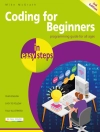This book constitutes the refereed proceedings of the 4th International Symposium on Biomedical Simulation, ISBMS 2008, held in London, UK, in July 2008. The 19 revised full papers and 7 poster papers presented were carefully reviewed and selected from numerous submissions. The papers are organized in four different sections corresponding to key areas and techniques of this constantly expanding field: finite element modeling, mass spring and statistical shape modeling, motion and fluid modeling and implementation issues. An additional section covers the posters presented at the meeting.
Содержание
Finite Element Modelling.- Physically Based Finite Element Model of the Face.- On the Application of Model Reduction Techniques to Real-Time Simulation of Non-linear tissues.- Constitutive Modelling of Endothelium Denudation for Finite Element Simulation of Angioplasty.- Efficient Nonlinear FEM for Soft Tissue Modelling and Its GPU Implementation within the Open Source Framework SOFA.- Mass Spring and Statistical Shape Modelling.- Biquadratic and Quadratic Springs for Modeling St Venant Kirchhoff Materials.- Exploring Parallel Algorithms for Volumetric Mass-Spring-Damper Models in CUDA.- An Integrated Approach for Reconstructing a Surface Model of the Proximal Femur from Sparse Input Data and a Multi-Level Point Distribution Model.- Coupling Deformable Models for Multi-object Segmentation.- Motion and Fluid Modelling.- Modelling Prostate Gland Motion for Image-Guided Interventions.- A Real-Time Predictive Simulation of Abdominal Organ Positions Induced by Free Breathing.- Effect of Friction and Material Compressibility on Deformable Modeling of Human Lung.- Simulating Mechanism of Brain Injury During Closed Head Impact.- Mechanism and Localization of Wall Failure During Abdominal Aortic Aneurysm Formation.- Implementation Issues.- Segmentation and 3D Reconstruction Approaches for the Design of Laparoscopic Augmented Reality Environments.- Deforming a High-Resolution Mesh in Real-Time by Mapping onto a Low-Resolution Physical Model.- Versatile Design of Changing Mesh Topologies for Surgery Simulation.- Contact Model for Haptic Medical Simulations.- Estimation of the Fracture Toughness of Soft Tissue from Needle Insertion.- Towards a Framework for Assessing Deformable Models in Medical Simulation.- Posters.- Image Guidance and Surgery Simulation Using Inverse Nonlinear Finite Element Methods.- Laparoscopic Tool Tracking Method for Augmented Reality Surgical Applications.- Coronary Motion Modelling for Augmented Reality Guidance of Endoscopic Coronary Artery Bypass.- Quantifying Effects of Class I Anti-arrhythmic Drugs in Human Virtual Cardiac Tissues.- Development of a Microscope Embedded Training System for Neurosurgery.- A Virtual Environment for Core Skills Training in Vascular Interventional Radiology.- Modelling Organ Deformation Using Mass-Springs and Tensional Integrity.












